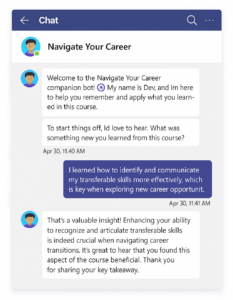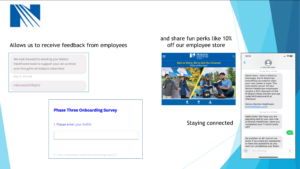Back in 2018, there was a report that cited that 67% of consumers worldwide had interacted with a chatbot for customer support with a projection of 85% for 2020. I haven’t found definitive statistics to see how this forecast has played out this year but certainly chatbots are more pervasive than ever.
One thing I have noticed, however, is that some websites that once placed chatbots with a prominent role have now made those chatbots take more of a back seat. In other words, companies initially smitten with the promise of chatbots configured them to automatically pop up as customers first came to their websites, but this promise of seamless automation didn’t play out as imagined and now many companies are rethinking their strategy.
Customers experienced frustration that the chatbot wasn’t smart enough to handle their specific query as well as annoyance that the chatbot popped up to block their view of the website when they had no intention of interacting with it.
Another challenge that companies underestimated was the workload in maintaining and improving the chatbot after the initial launch. The optimistic idea that you just have to set up your bot and it would automatically learn and improve without any hand holding was more theory than reality.
But as with the emergence of any other technology, the early adopters learn the hard lessons for the benefit of those that come after. And to reference an overused cliche, there is no need to throw the baby out with the bathwater.
At Mobile Coach, we are living through these early stages of the learning curve for efficient and delightful customer service chatbots. The following are some key best practices we recommend:
Careful menu design
Most web-based customer service chatbots rely on a menu system (this is sometimes called a guided chatbot experience) with buttons. Menus with buttons are super helpful because it is quick and easy for customers to navigate and it also lessens the need for natural language processing (which can be unreliable or buggy).
You need strong organizational skills to plan out your menu and submenus. Doing this well is perhaps the biggest factor in how effective your chatbot will be.
Confirming help
Once you think the chatbot has resolved a customer query, it’s best to confirm that with the user by having the chatbot ask, “Was that what you were looking for?”
Doing this enables you to get valuable data on whether the chatbot was indeed successful but also gives the user a way to keep trying to find their answer if they are at a dead end.
Plan for when the chatbot is stumped
Even the best chatbot designs will fail to answer 100% of all customer questions. Some customer questions are going to be ultra specific to their situation. Make sure to provide a good way for customers to understand how to get access to human help.
It’s best if the chatbot can create a ticket with what it knows about the customer situation to pass on to a human support representative so the customer doesn’t have to explain themselves all over again.
Plan for an active maintenance workflow post launch
Some companies may be surprised to find an increase in customer support tickets after launching their chatbot, not a decrease. This can happen because chatbots are very easy to interact with and you can expect an influx of new interactions once you put one on your website.

People who were holding on to their questions before may now be comfortable asking them because speaking with a chatbot is quicker and easier than speaking with a person. It is likely that version 1 of your chatbot will need to be tweaked based on real life interactions with your customers.
Make sure you plan for someone on your team to be responsible for monitoring chatbot efficacy and that there is a plan in place for updates and improvements. I’s also helpful to have some guiding metrics to gauge ROI.
For example, you can monitor what percentage of customer service inquiries are successfully brought to complete resolution via the chatbot. You can also track qualitative measures like customer satisfaction pre vs. post chatbot implementation.
Suppress the urge to be cute and clever
Chatbots do provide an opportunity for attempts at humor and cuteness, often to deflect from their limited functionality. In a customer service use case, these often fall flat. The key value proposition for a chatbot in this use case is immediacy. You want to deliver an answer quickly and accurately and if you can’t do that, provide guidance towards the next fastest resolution. If you add any personality, only do so after you are confident that you are providing the right information as quickly as possible.
Programmatic versus machine learning
Some chatbot providers rely on machine learning as the engine for chatbot content while others are programmatic in nature. Machine learning can be effective if you have significant website traffic (e.g. tens of millions of queries) and if your commonly asked questions are relatively general and benign in nature.
For many companies, however, a programmatic approach is going to yield happier customer resolutions. Programmatic chatbots dictate what the chatbot says based on what the company has authored. This gives companies more control over exactly how the chatbot behaves, thus making it easier to maintain quality control.
No, customer support chatbots have not yet lived up to the hype they had a few years ago, but the technology certainly has not stood still, either. In fact, in most cases, it’s not the technology that causes the problem, it’s the way the chatbot is implemented. Following these tips will give any company a better chance at building a chatbot that delivers real benefit to customers and the company alike. A chatbot will not replace your human support team, but it can certainly save your team and your customers time and energy. Chatbots are not a magic wand, but they can be a powerful tool for your business.




